Hey there! Are you tired of the same old kiwi every day and looking to add some variety to your fruit basket? Well, you’re in luck! Today, I’m going to introduce you to some incredible fruits similar to kiwi that will tickle your taste buds and provide a delightful alternative to your regular snacking routine.
When it comes to kiwi alternatives, you’ll be surprised by the range of flavors and textures available. These lesser-known fruits have their unique characteristics that make them worth exploring. So, let’s dive into the world of kiwi substitutes and discover the tantalizing options waiting for you!
Key Takeaways:
- Exploring fruits similar to kiwi can add excitement to your snacking routine.
- There are a variety of flavors and textures to discover in kiwi alternatives.
- Trying new fruits can expand your culinary horizon and introduce new taste experiences.
- Kiwi substitutes offer their unique nutritional benefits.
- Don’t be afraid to step out of your comfort zone and try something different.
Phalsa – A Refreshing Summer Fruit
Phalsa is a small berry with a plum-colored exterior and white grape-like flesh inside. This fruit has a sweet taste with a balance of astringent and acidic notes, similar to the flavors of cranberry, grape, and jamun. Phalsa acts as a cooling agent and is often used to treat dehydration. It is in season during the summer months and is available from March to June in India. Phalsa can be used to make refreshing sherbets and can be a substitute in recipes that call for black currant.
If you’re looking for a delicious fruit similar to kiwi, Phalsa is a great option. Its unique flavor profile makes it a refreshing addition to your summer snacks and beverages. With its natural cooling properties, Phalsa helps combat the scorching heat and keeps you hydrated in the hot season. Plus, it’s a versatile fruit that can be used in various culinary creations.
Phalsa can be paired with other fruits in salads, added to smoothies for a tangy twist, or simply enjoyed on its own. Its sweet and tangy taste makes it a perfect ingredient for sherbets and refreshing drinks. Furthermore, Phalsa can add an exciting dimension to your recipes that call for black currant. So, next time you’re in search of a kiwi alternative, give Phalsa a try and savor its unique flavors.
Health Benefits of Phalsa Fruit
The Phalsa fruit offers numerous health benefits, making it a valuable addition to your diet. Here are some of the key health benefits it provides:
- Rich in antioxidants that help fight free radicals and protect against cell damage.
- Contains essential nutrients like vitamin C, vitamin A, calcium, and iron.
- Acts as a natural cooling agent, aiding in the prevention of various summer-related health issues.
- May help regulate blood sugar levels due to its low glycemic index.
- Supports digestion and improves gut health.
With its delicious taste and plethora of health benefits, Phalsa is undoubtedly a fruit you should consider incorporating into your diet. So, head to your nearest market during the Phalsa season and indulge in this refreshing summer treat!
| Nutritional Content of Phalsa Fruit (per 100g) | Amount |
|---|---|
| Calories | 40 |
| Carbohydrates | 9g |
| Fiber | 2g |
| Vitamin C | 47mg |
| Potassium | 41mg |
Water Caltrope (Singhada) – A Nutty Delight
In my quest to find fruits similar to kiwi, I stumbled upon the water caltrope, also known as Singhada. This dark fruit possesses a unique nutty flavor that reminds me of chestnuts, brazil nuts, and peanuts. Its starchy and crumbly texture adds an interesting element to any dish it’s used in.
Harvested during autumn and early winter, Singhada is a versatile ingredient that can be incorporated into various recipes. In fact, the fruit is often dried and ground into flour, which is commonly utilized in religious foods and fruit-based diets.
One of my favorite ways to enjoy Singhada is by boiling or roasting it and adding it to stir-fries and sabzis. Its distinctive taste and texture elevate these dishes to new levels of deliciousness. Whether you’re a fan of chestnuts or peanuts, water caltrope (Singhada) is sure to delight your taste buds with its unique twist on nuttiness.
Here’s a quote from a fruit connoisseur:
“Singhada is a fascinating fruit that adds a delightful nutty flavor to dishes. Its versatility in both sweet and savory preparations makes it a prized ingredient in many cuisines.” – Jonathan Smith, Fruit Enthusiast
Notable Nutritional Values (per 100g) of Water Caltrope (Singhada):
| Nutrient | Amount |
|---|---|
| Calories | 115 |
| Carbohydrates | 26g |
| Protein | 2g |
| Fiber | 2g |
| Vitamin C | 34mg |
| Calcium | 5mg |
As seen in the nutritional table above, Singhada fruit provides a good source of carbohydrates and fiber while being low in calories. It also offers a decent amount of vitamin C, which helps support the immune system.
Next, let’s explore another fascinating fruit that bears a striking resemblance to kiwi – the starfruit!
Starfruit – A Tropical Delight
When it comes to fruits resembling kiwi, one that stands out is the starfruit, also known as Carambola. This unique fruit gets its name from its star-like shape when sliced, making it an eye-catching addition to any dish. But it’s not just its appearance that makes starfruit special; it also delights your taste buds with its sweet and slightly sour flavor.
The texture of starfruit is another interesting aspect, as it is both crunchy and watery. When you take a bite, you’ll experience a refreshing sensation reminiscent of a hybrid between a grape and a pear. It’s a delightful combination that makes starfruit a tropical delicacy.
What makes starfruit even more appealing is its availability. Unlike some seasonal fruits, starfruit can be enjoyed year-round. However, it particularly flourishes during two specific seasons: September through October and January through February.
With its unique flavor and versatility, starfruit can be used in various ways. You can add it to relishes for a tangy twist or dry it to create a delicious snack. Starfruit also pairs well with seafood, so consider cooking it alongside shrimp and fish in Asian-inspired recipes for a truly exquisite flavor.
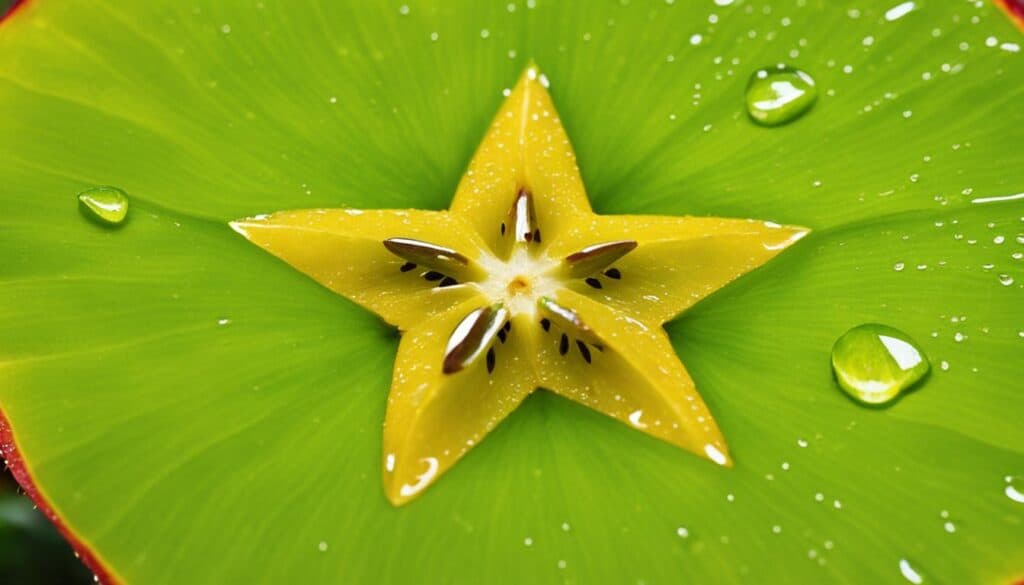
With its star-like shape, sweet and sour taste, and unique texture, starfruit is undoubtedly a tropical delight. It’s no wonder that this kiwi-inspired fruit has become popular among food enthusiasts. So why not give it a try and experience the exotic flavors of starfruit for yourself?
Bael (Wood Apple) – A Fragrant Indulgence
In my exploration of fruits similar to kiwi, I came across the fascinating Bael fruit, also known as Wood Apple. This unique fruit boasts a hard, wood-like exterior and a creamy orange pulp that is as visually appealing as it is delicious.
The flavor profile of Bael is truly something to be savored. It combines sweetness with pungency and a hint of lemony tang, creating a delightful burst of taste in every bite. What sets Bael apart is its subtle fermented sweetness, adding an intriguing layer of complexity to its flavor.
Bael fruit is in season from February to May in India, making it a delightful springtime indulgence. And while it may not be as well-known as kiwi, Bael offers a range of culinary possibilities. It can be used as a substitute for tamarind in chutneys, adding its unique flavor and a touch of sweetness to the mix. Additionally, its creamy pulp can be incorporated into a variety of desserts, such as pancakes, custard, panna cotta, and even ice cream.
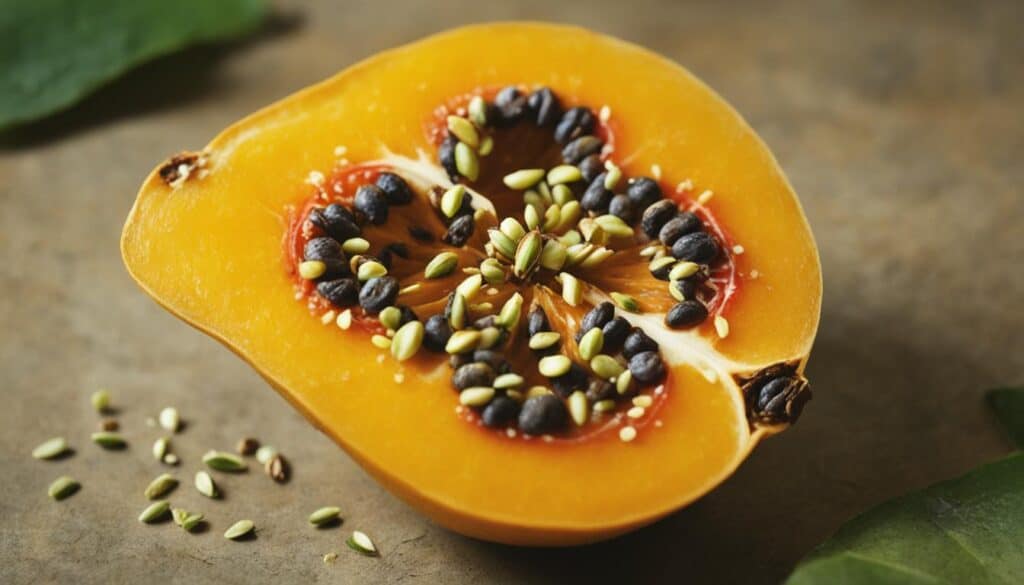
With its fragrant aroma and irresistible taste, Bael fruit is a true gem waiting to be discovered. So why not expand your fruit horizons and give this kiwi alternative a try?
Karonda – A Sour and Umami Delight
Karonda, also known as Carissa carandas, is a nutrition-rich wild berry that is native to the Indian subcontinent. With its small olive-like shape, karonda resembles a kiwi in appearance, but offers a unique flavor and taste experience. This karonda fruit has a sour taste that can be best described as a combination of cranberries and lemons, with a dry astringent flavor similar to jamun. It is this harmonious blend of flavors that makes karonda a true delight for the taste buds.
One interesting way to enhance the taste of karonda is by sprinkling it with a bit of rock salt. This not only enhances its slightly salty taste, but also adds more depth to the overall flavor profile. Whether enjoyed as a standalone snack or incorporated into various recipes, karonda adds a tangy and umami twist that can liven up any dish.
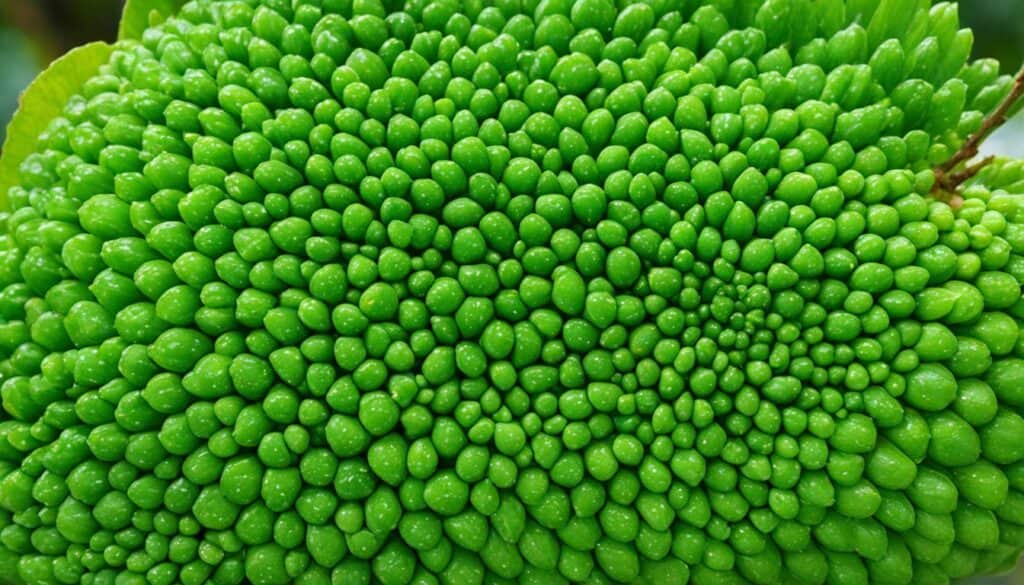
Harvested from August to October, karonda can be used in a variety of culinary creations. Its tangy and sour flavor makes it a popular choice for pickles, chutneys, and preserves. Karonda’s unique taste also lends itself well to savory dishes, such as curries and stews, where it can offer a delightful burst of flavor. Additionally, karonda can be used to make refreshing drinks and beverages, including juices and cocktails.
Benefits of Karonda
Aside from its enticing taste, karonda is packed with essential nutrients that can contribute to your overall health and well-being. This fruit is a good source of vitamin C, which can boost your immune system and promote healthy skin. Karonda is also rich in antioxidants, which help protect your body against damaging free radicals.
Furthermore, karonda contains dietary fiber, which supports digestion and helps maintain a healthy digestive system. With its low calorie content and high water content, karonda can also be a great addition to a weight management diet.
Karonda Nutritional Information (per 100g)
| Nutrient | Amount |
|---|---|
| Calories | 42 |
| Carbohydrates | 10g |
| Fiber | 2g |
| Protein | 1g |
| Vitamin C | 13.8mg |
| Potassium | 31mg |
Source: USDA National Nutrient Database
Overall, karonda is a versatile fruit that offers a unique flavor experience. Whether you’re looking to add a tangy twist to your dishes or simply enjoy its sour and umami taste as a snack, karonda is a delightful choice. With its nutritional benefits and culinary versatility, karonda is undoubtedly a fruit worth exploring.
Graviola – A Tropical Treasure
When it comes to fruits similar to kiwi, one tropical gem stands out – graviola fruit. Also known as soursop, graviola offers a unique flavor profile that will tantalize your taste buds. Its sweet and tangy taste brings together the refreshing notes of pineapple and the lusciousness of strawberry, creating a harmonious blend of tropical goodness.
Not only is graviola a delectable treat, but it also packs a punch in terms of its nutritional content. This tropical treasure is rich in nutrients and antioxidants, making it a healthy choice for those looking to boost their well-being. Graviola is known to be a good source of vitamin C, vitamin B6, and dietary fiber.
Graviola can be enjoyed in various ways, allowing you to explore its versatile nature. Indulge in the pure delight of the fruit on its own, relishing its unique flavors bite after bite. Alternatively, you can incorporate graviola into your favorite recipes to add a tropical twist. From smoothies and desserts to savory dishes, the possibilities are endless.
Discover the Nutritional Highlights of Graviola:
| Nutrient | Amount per 100g |
|---|---|
| Calories | 66 |
| Carbohydrates | 16g |
| Dietary Fiber | 3g |
| Vitamin C | 20.6mg |
| Vitamin B6 | 0.3mg |
Graviola is truly a tropical treasure that deserves a place in your fruit collection. So, why not embark on a flavor-filled journey and treat yourself to the goodness of this kiwi look-alike?
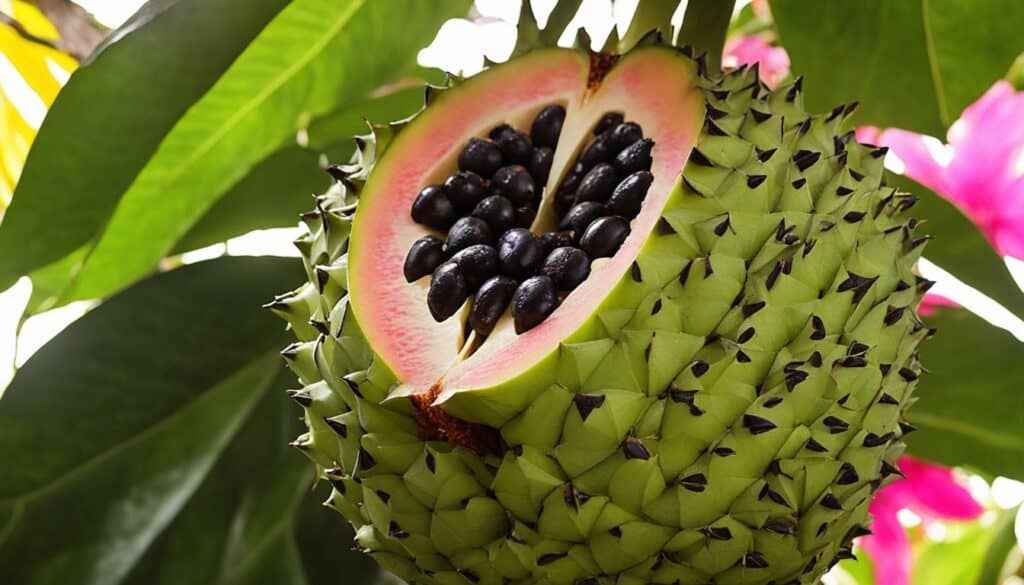
Loquat – A Sweet and Citrusy Treat
When it comes to finding a sweet and citrusy fruit similar to kiwi, look no further than the loquat. This small fruit offers a burst of bright flavors that are sure to tantalize your taste buds.
The loquat has a unique texture that can vary from crisp to peach-like, depending on its ripeness. Its edible skin ranges in color from yellow to red, adding visual appeal to your plate. But it’s not just the taste and appearance that make loquat a standout fruit. It is also packed with nutritional benefits.
Loquats are a rich source of provitamin A carotenoids, which have antioxidant properties and can be converted into vitamin A by the body. These antioxidants help protect the body against free radicals, promoting overall health and well-being.
There are numerous ways to enjoy loquats. You can savor their refreshing sweetness by eating them fresh off the tree or incorporate them into various culinary creations. Grilling loquats brings out their natural flavors and adds a delightful twist to your dishes. They can also be used in baked goods like pies and jams, enhancing their taste and providing a tangy element.
Discover the vibrant and zesty flavors of loquat fruit as you explore kiwi alternatives and kiwi-inspired fruits. Its citrusy sweetness and versatility make it an excellent choice for adding a fresh twist to your favorite recipes.

“The loquat is like a burst of sunshine in every bite. Its sweet and citrusy flavors brighten up any dish, making it a perfect alternative to kiwi.”
Conclusion
Embarking on a culinary journey to discover fruits similar to kiwi opens up a world of delightful possibilities. Whether you’re craving the refreshing taste of a phalsa berry, the nutty indulgence of Singhada, or the tropical treasure of starfruit, there are numerous alternatives to satisfy your palate. Each of these fruits offers its own unique flavors and nutritional benefits, making them excellent substitutes for kiwi in recipes or as standalone snacks.
Why not step outside your comfort zone and embrace something new? Exploring these kiwi-like fruits can add a whole new dimension to your culinary repertoire, bringing excitement and variety to your meals. So go ahead, give them a try, and unlock a whole new world of flavors and experiences.
With options like phalsa, Singhada, and starfruit at your fingertips, you don’t have to limit your fruit choices to just kiwi. Expand your horizons and let your taste buds embark on a delicious adventure. Enjoy the diverse tastes and textures these kiwi alternatives have to offer, adding a burst of flavor and excitement to your dishes. So, dare to be adventurous in your fruit choices and discover the abundance of flavors in these unique alternatives.
FAQ
What are some fruits similar to kiwi?
Some fruits similar to kiwi include phalsa, water caltrope (singhada), starfruit, bael (wood apple), karonda, graviola (soursop), and loquat.
What is phalsa?
Phalsa is a small berry with a plum-colored exterior and white grape-like flesh. It has a sweet taste with a balance of astringent and acidic notes, similar to the flavors of cranberry, grape, and jamun.
What is water caltrope (singhada)?
Water caltrope, also known as singhada, is a dark fruit with a nutty flavor reminiscent of chestnuts, brazil nuts, and peanuts. It has a starchy and crumbly texture and is typically harvested in autumn and early winter.
What is starfruit?
Starfruit, also known as carambola, is a unique fruit with a star-like shape when sliced. It has a sweet and slightly sour taste, and its texture is crunchy and watery, reminiscent of a hybrid between a grape and a pear.
What is bael (wood apple)?
Bael, also known as wood apple, is a unique fruit with a hard, wood-like exterior and creamy orange pulp. It has a sweet, pungent, and lemony flavor with a hint of fermented sweetness. Bael is in season from February to May in India.
What is karonda?
Karonda is a nutrition-heavy wild berry with a small olive-like shape. It has a sour taste with the dry astringent flavor of jamun. Karonda is harvested from August to October and can be used in pickles, chutneys, and other dishes.
What is graviola?
Graviola, also known as soursop, is a tropical fruit with a unique flavor profile. It has a sweet and tangy taste, reminiscent of a blend of citrus fruits like pineapple and strawberry. Graviola is rich in nutrients and antioxidants.
What is loquat?
Loquat is a small fruit with a sweet, bright, and citrusy taste. Its texture varies from crisp to peach-like, depending on the ripeness. The skin of the fruit is edible and ranges in color from yellow to red.

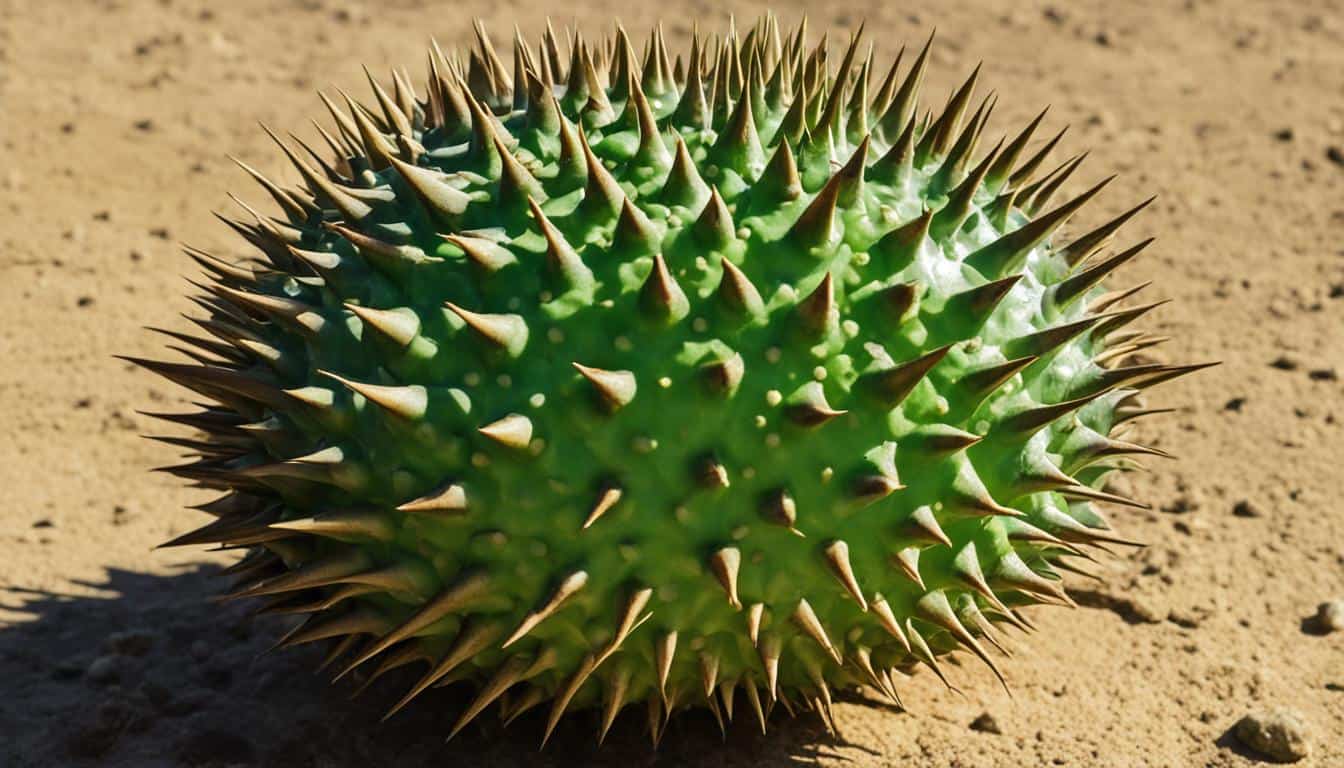



Leave a Reply